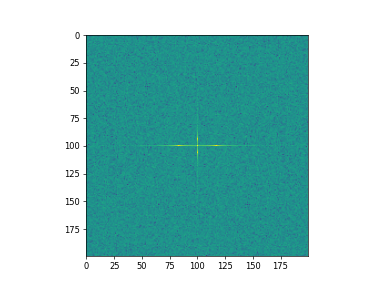nlcpy.fft.fftn
- nlcpy.fft.fftn(a, s=None, axes=None, norm=None)[ソース]
Computes the n-dimensional discrete fourier transform.
This function computes the n-dimensional discrete fourier transform over any number of axes in an m-dimensional array by means of the fast fourier transform (FFT).
- Parameters
- aarray_like
Input array, can be complex.
- ssequence of ints, optional
Shape (length of each transformed axis) of the output (
s[0]refers to axis 0,s[1]to axis 1, etc.). This corresponds to n forfft(x, n). Along any axis, if the given shape is smaller than that of the input, the input is cropped. If it is larger, the input is padded with zeros. if s is not given, the shape of the input along the axes specified by axes is used. If s and axes have different length, ValueError occurs.- axessequence of ints, optional
Axes over which to compute the FFT. If not given, the last
len(s)axes are used, or all axes if s is also not specified. Repeated indices in axes means that the transform over that axis is performed multiple times. If an element of axes is larger than than the number of axes of a, IndexError occurs.- norm{None, "ortho"},optional
Normalization mode. By default(None), the transforms are unscaled. It norm is set to "ortho", the return values will be scaled by
.
- Returns
- outcomplex ndarray
The truncated or zero-padded input, transformed along the axes indicated by axes, or by a combination of s and a, as explained in the parameters section above.
参考
ifftnComputes the n-dimensional inverse discrete fourier transform.
fftComputes the one-dimensional discrete fourier transform.
rfftnComputes the n-dimensional discrete fourier transform for a real array.
fft2Computes the 2-dimensional discrete fourier transform.
fftshiftShifts the zero-frequency component to the center of the spectrum.
注釈
The output, analogously to
fft(), contains the term for zero frequency in the low-order corner of all axes, the positive frequency terms in the first half of all axes, the term for the Nyquist frequency in the middle of all axes and the negative frequency terms in the second half of all axes, in order of decreasingly negative frequency.Examples
>>> import nlcpy as vp >>> import numpy as np >>> a = np.mgrid[:3, :3, :3][0] >>> vp.fft.fftn(a, axes=(1, 2)) array([[[ 0.+0.j, 0.+0.j, 0.+0.j], [ 0.+0.j, 0.+0.j, 0.+0.j], [ 0.+0.j, 0.+0.j, 0.+0.j]], [[ 9.+0.j, 0.+0.j, 0.+0.j], [ 0.+0.j, 0.+0.j, 0.+0.j], [ 0.+0.j, 0.+0.j, 0.+0.j]], [[18.+0.j, 0.+0.j, 0.+0.j], [ 0.+0.j, 0.+0.j, 0.+0.j], [ 0.+0.j, 0.+0.j, 0.+0.j]]]) >>> vp.fft.fftn(a, (2, 2), axes=(0, 1)) array([[[ 2.+0.j, 2.+0.j, 2.+0.j], [ 0.+0.j, 0.+0.j, 0.+0.j]], [[-2.+0.j, -2.+0.j, -2.+0.j], [ 0.+0.j, 0.+0.j, 0.+0.j]]])
>>> import matplotlib.pyplot as plt >>> [X, Y] = np.meshgrid(2 * vp.pi * vp.arange(200) / 12, ... 2 * vp.pi * vp.arange(200) / 34) >>> S = vp.sin(X) + vp.cos(Y) + vp.random.uniform(0, 1, X.shape) >>> FS = vp.fft.fftn(S) >>> _ = plt.imshow(vp.log(vp.absolute(vp.fft.fftshift(FS))**2)) >>> plt.show()
